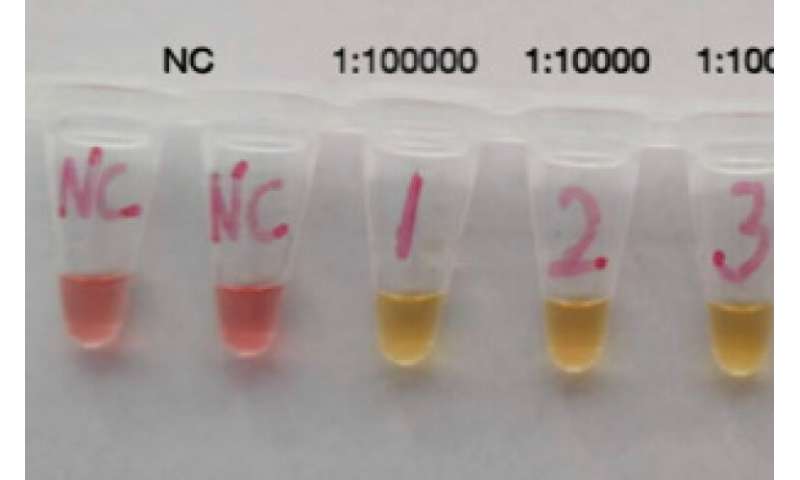New diagnostic test for COVID-19 may deliver results within half an hour


Researchers at Karolinska Institutet in Sweden have together with researchers in China developed a new diagnostic test for COVID-19. The test can be performed without advanced laboratory equipment and deliver the result in about half an hour, according to a study published in the journal Clinical Chemistry. The researchers are now working on verifying the test results on confirmed COVID-19 patients at the Karolinska University Hospital.
Currently, so-called PCR-analyses are routinely used to test if a patient has been infected with COVID-19, the disease caused by the new coronavirus that has spread like a wildfire across the globe. The PCR-method makes it possible to find very small quantities of a pathogen. However, the analyses require trained personnel and sophisticated laboratory equipment that can alternate between different temperatures, and it takes at least two hours to get a result. Therefore, there is a significant need for rapid and accurate testing methods for COVID-19 that can be carried out onsite also during basic conditions.
Now, researchers at Karolinska Institutet have, together with researchers at Shenyang University of Chemical Technology and Huazhong University of Science and Technology in China, developed an experimental COVID-19 test with promising results.
The researchers have adapted a technique called loop-mediated isothermal amplification (LAMP) specifically for the new coronavirus. The technique makes it possible to amplify the virus’ RNA at a constant temperature of 65 degrees Celsius and to see a reaction in only 20 to 40 minutes.
Can be performed under simple conditions
“One big advantage with our test is that it is fast, and you can perform it under basic conditions,” says Vicent Pelechano, researcher at the Department of Microbiology, Tumor and Cell Biology and SciLifeLab at Karolinska Institutet and one of the study’s authors. “All you need is a test tube containing the primers, a hotplate, a thermometer and a pot of water. This makes it especially suitable for regions that lack advanced analytical equipment, such as war-torn areas or refugee camps.”
https://youtube.com/watch?v=n5–V4-RPgY%3Fcolor%3Dwhite
By combining primers optimized specifically for SARS-CoV-2 with a specific gene of the virus, the researchers were able to detect as little as 10 copies of the virus gene, which is in line with detection limits of the PCR-method. The technique can be combined with a pH-indicator, which changes the color of the reaction mix from pink (alkaline) to yellow (acidic) if the sample is positive for SARS-CoV-2.
“The color-indicator makes it extremely easy to see if a sample is positive or negative,” Vicent Pelechano says. “That could be a decisive factor if you lack specialized equipment to check the reaction.”
Most of the study was done using optimized gene sequences of the virus. In addition, a total of 248 samples from confirmed COVID-19 patients in China were tested, of which 89.9 percent came back positive using the LAMP-test. The remaining 10.1 percent were deemed to have such low viral loads that they came back negative.
Verification studies underway
Additional research is currently underway at Karolinska University Hospital to verify that the test works on real patients whose samples have not been purified by extracting a specific gene of the virus.
“We have showed that this technique works under optimal conditions in the lab, and we have seen promising results from the first studies on patients in China,” Vicent Pelechano says. “Now, we need to make sure that the test also works under other conditions, such as on real COVID-19 patients in Sweden.”
Source: Read Full Article